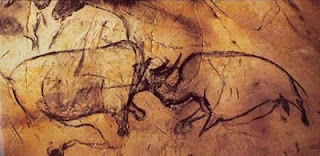Lascaux Caves: the prehistoric Sistine Chapel
Known as “the prehistoric Sistine Chapel,” the Lascaux Caves, a cave complex in southwestern France, contain some of the most remarkable paleolithic cave paintings in the world, from at least 15,000 years ago.
Known as “the prehistoric Sistine Chapel,” the Lascaux Caves, a cave complex in southwestern France, contain some of the most remarkable paleolithic cave paintings in the world, from at least 15,000 years ago.
The cave was discovered on 12 September 1940 by four teenagers, Marcel Ravidat, Jacques Marsal, Georges Agnel, and Simon Coencas, as well as Ravidat’s dog, Robot. Public access was made easier after World War II. By 1955, the carbon dioxide produced by 1,200 visitors per day had visibly damaged the paintings. The cave was closed to the public in 1963 in order to preserve the art.
Altamira Caves: as Picasso famously exclaimed, “after Altamira, all is decadence”
The fabulous caves of Altamira are located near Santilliana del Mar in Cantabria, Northern Spain, about 30 kms. west of Santander. As is so often the case they were discovered by chance. In 1868 a hunter by the name of Modesto Cubillas stumbled across them but they were not properly explored until 1875 by a nobleman from Santander named Marcellino Sanz de Santuola but it was his daughter, Maria de Santuola who discovered the wonderful cave paintings of Altamira in 1879. However they were of such astounding quality and so well preserved that specialists doubted their authenticity and sadly the discoverer was dead before they were officially acknowledged as genuine. At the beginning of the 20th. centuary they were finally accepted as authentic after similar remains from the stone age were discovered in the area. However the cave paintings of Altamira remain the most exceptional evidence of Magdalénian culture (between c. 16,500 and 14,000 years ago) in southern Europe.
Chauvet Caves: spectacular artwork
The Chauvet Cave or is located in the Ardèche département, southern France. It became famous in 1994 after a trio of speleologists found that its walls were richly decorated with Paleolithic artwork, that it contained the fossilized remains of many animals, including those that are now extinct, and that the floor preserved the footprints of animals and humans. The Chauvet Cave was soon regarded as one of the most significant pre-historic art sites in the world.
The cave is uncharacteristically large and the quality, quantity, and condition of the artwork found on its walls has been called spectacular. It appears to have been occupied by humans during two distinct periods: the Aurignacian and the Gravettian. Most of the artwork dates to the earlier, Aurignacian, era (30,000 to 32,000 years ago). The later Gravettian occupation, which occurred 25,000 to 27,000 years ago, left little but a child’s footprint, the charred remains of ancient hearths and carbon smoke stains from torches that lit the caves.
Magura Cave: peeking into the prehistoric world
The Magura cave is in the Northwest of Bulgaria, some 180km from the capital of Sofia. Pearls of the cave are the unique paintings on stone, done in bat guano. They are multi layered and come from different epochs – The Epupaleolith, The Neolith, The Eneolith, the beginning of The Early Bronze Age. The paintings in the Magura cave represent dancing women, dancing and hunting men, disguised men, large variety of animals, suns, stars, instruments of labour, and plants. The Solar calendar from The Late Eneolith and some later additions, made during The Early Bronze age are quite accurate.
Through pictures information about religous events and feasts along with their smbols and particular personages were saved. Some of the images are very complex compositions and hint about the diversity of ideas in a world extremely rich in intellectual and spiritual aspect. The Magura drawings define its function as a temple for a long period of time – from The Neolith till The Iron age.
Cosquer Cave: an underwater cave from up to 27,000 years ago
The Cosquer cave is located in the Calanque de Morgiou near Marseille, France, not very far from Cap Morgiou. This cave, the entrance of which is located underwater nowadays, was discovered by Henri Cosquer in 1991. Today the cave can be accessed through a 175-meter long tunnel, the entrance of which is located 37 meters under sea level.
The cave contains several dozen painting and carvings dating back to Upper Paleolithic, matching two different phases of occupation of the cave: Older drawings of hand stencils and other related motifs, dating back to 27,000 BP (Gravettian); and newer drawings of signs and animal drawings dating back to 19,000 BP (Solutrean), representing both “classical” animals such as bisons, ibexes, and horses but also marine animals such as seals and what appear to be auks and jellyfish.
Font de Gaume: the best example of polychrome painting
Prehistoric people living in the Dordogne Valley first settled in the mouth of Font de Gaume around 25,000 BC. The cave mouth was inhabited at least sporadically for the next several thousand years. However, after the original prehistoric inhabitants left, the cave was forgotten until the nineteenth century when local people again began to visit the cave.
In 1901, Denis Peyrony, a school teacher from Les Eyzies, discovered the paintings inside Font de Gaume. The paintings date from around 17000 BC, during the Magdalénien period. However, many of the cave’s paintings were discovered much later. The cave’s most famous painting, a frieze of five bison was discovered accidentally in 1966 while scientists were cleaning the cave. Font de Gaume holds over 200 polychrome paintings and is considered the best example of polychrome painting other than Lascaux, which is now closed to the public. The paintings in Font de Gaume include depictions of more than 80 bison, approximately 40 horse depictions, and more than 20 mammoth depictions.




















No comments:
Post a Comment